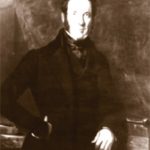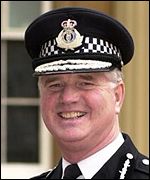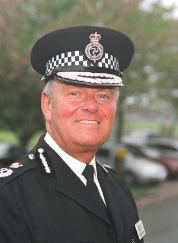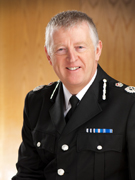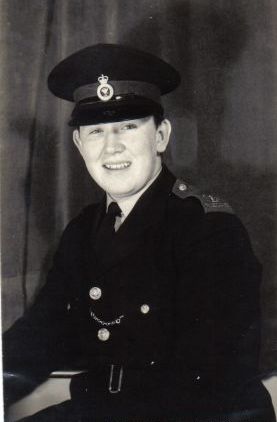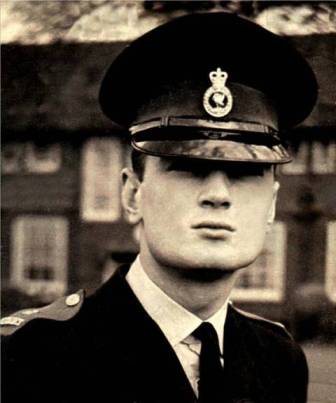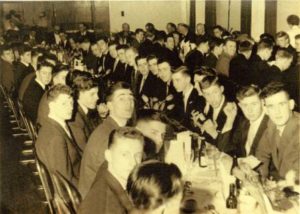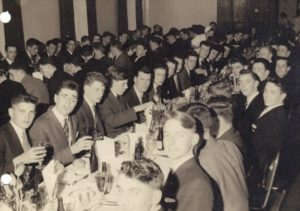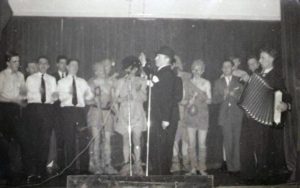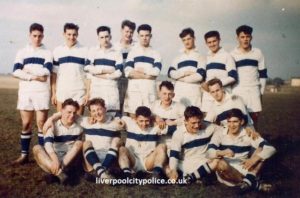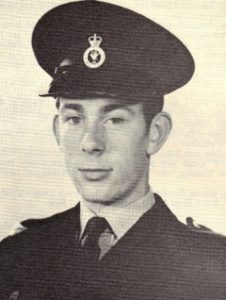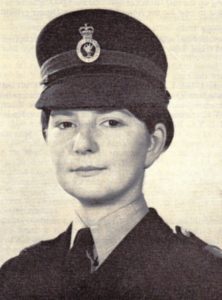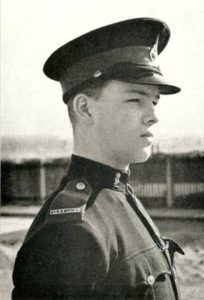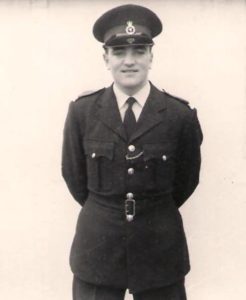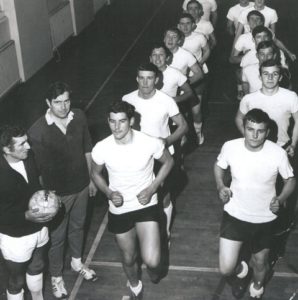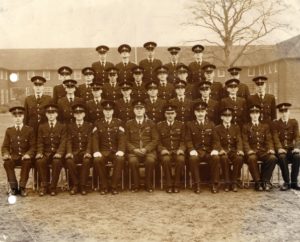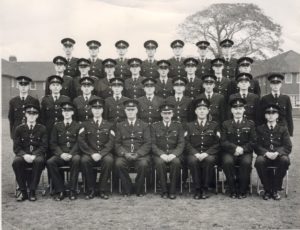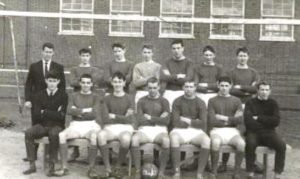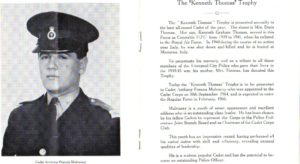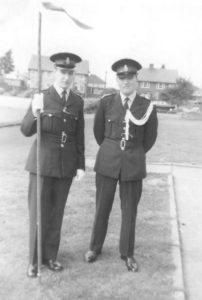POLICE CADETS by john edwards, retired
In 1948, Mr Charles Martin, the Chief Constable of the Liverpool City Police reported that the recruiting of police officers had slowed up to almost a standstill. He added that unless something was done very soon to attract men of the type required, the outlook for the future, particularly as far as crime was concerned, was regarded with considerable anxiety. One measure in an attempt to improve the recruiting problem was that on the 16th November 1948 the Watch Committee resolved to appoint police cadets (aged 15-18 years) subject to the approval of the Home Secretary. This was obtained. It was felt a Cadet Corps would be of immense benefit to the Force in providing a flow of recruits who would have a sound apprenticeship, acquiring a sound knowledge of the principles and traditions of the Police service.
Thus in 1949 saw the innovation of the formation of the Police Cadet Corps. 40 boys were appointed after careful selection from a large number of applicants.. Except for weekends and one night per week the boys resided at the Police Training School, Mather Avenue, Liverpool. There they received an initial training course of 5 weeks’ duration. They then commenced duty in the divisions and the various departments of the Force according to a prepared scheme, returning for further training for 2 days each week to the Training School. They were given instructions in educational subjects, shorthand/typing, foot drill, physical training, self defence, games, swimming and first aid etc. Cadets were expected to obtain Life Saving medallions and other awards and First Aid medallions, vouchers and certificates.
By 1949, 61 boys had been enrolled but due to National Service requirements 20 members of the Corps were serving in His Majesty’s Forces, the majority of them being posted to the Corps of Military Police. No difficulty was experienced in obtaining suitable recruits for the Cadet Corps to replace those called up for service in H.M.Forces.
From March 1952, the original cadets began to return to the Force from National Service as police recruits to the Regular Force. It was not until 1955 that the Government announced arrangements enabling police cadets to defer military service provided they continued to serve as cadets and subsequently as police officers in a regular force. Nevertheless, a number of cadets on reaching the age of military service chose to join H.M.Forces and not to seek deferment.
It became traditional for the Cadet Corps to be inspected annually by a person of note. In 1951, a silver trophy was donated by Mrs D Thomas in memory of her son, the late Constable Thomas, who was killed in 1944 while serving in the R.A.F. It was presented to the best Cadet of the year and would be presented in future to the outstanding Cadet of each succeeding year.
It was gratifying to note that many police forces had copied the example set by Liverpool’s Cadet Corps. A number of Forces sent their cadets to Liverpool for an initial training course at the Police Training School, Mather Avenue. They included Birkenhead, Bootle, Burnley, Cambridgeshire, Cumberland & Westmorland, East Anglia, Gloucestershire, Hull, Oldham, Oxford, Isle of Man, Southend, Southport, Wallasey, Warwickshire, Warrington and Wigan.
From 1956, the majority of male cadets attended one of the Outward Bound Schools – Aberdovey, Devon, Eskdale, Moray (Scotland),Ullswater, Luxembourg, Berchtesgaden and the girls went to Rhownair, Towyn. It was considered that the courses at these schools had an undoubted value to youths and cadets benefited as a result of the experiences and training. Some cadets were successful in being chosen for the Bridge in Britain Scholarship and to travel to Israel, others to participate in the Comex 5 scheme of an overland expedition from the U.K., to South Asia, the object being to cement relations with Commonwealth countries and one cadet attended a course aboard the sailing ship ‘Winston Churchill’.
In 1958 the authorised establishment of police cadets in the Force was increased to 125 (and in the following years to 154).. In 1958, 89 cadets were serving in the Corps, 38 in H.M.Forces, while 91 were already performing duty in the Regular Force, with a further nine having joined other Forces. As in previous years, application were in excess of vacancies, proof that cadet training for the Police Service was an idea with great appeal to many boys.
A special feature of 1958 was the entry of the Cadet Corps into the Duke of Edinburgh’s Award Scheme and many cadets attained the Silver Award and then the Gold Award which was generally presented to them at Buckingham Palace.
In their training cadets were directed towards developing appreciation of social problems. In order to widen their practical experience Many forms of voluntary community service, both on and off duty, were undertaken by cadets. With the co-operation of the Community Service Volunteers Organisation many cadets volunteered to carry out 3 months residential community work outside Liverpool.
To improve their educational attainments at ’O’ and ’A’ level standards, cadets attended Childwall Hall County College and also Millbank Commercial College for typewriting instruction.
In 1958, the Chief Constable and 24 Cadets with their instructor were invited by the West German Government to help rebuilt relations between the two countries. They spent two weeks with the German police at Hann.Munden, laying the foundations for others to follow. Later, a party of German trainees stayed at the Police Training School, Mather Avenue for two weeks. 50 years later 4 of the original 24 Cadets with their instructor reunited in Hann.Munden. They were told by their German hosts that in their visit in 1958 that the Liverpool group had taken a leap of faith to go to a country that they were at war with for so long but the short visit had built many bridges for others.
From 1964, one or two Liverpool police cadets were selected each year, in spite of formidable competition, to take part in a British Schools Exploring Society’s six-weeks expeditions to various Arctic regions.
In 1966, the Home office approved that female cadets be engaged for duties with the Force and fixed an establishment of 24. They participated in all the Cadet Corps activities along with the male cadets. One female cadet eventually gained the rank of Inspector in charge of the Mounted and Dog Sections.
A number of cadets were successful in representing their country or region at a number of sports.
Three male cadets received Sovereign Awards for gallantry.
Many cadets went on to become Senior Police Officers – three became Chief Constables in other Forces and one became a Commander in the Metropolitan Police. Another became a Member of Parliament.
In 1976, because of the financial situation a decision was taken to terminate recruitment of the Cadet Corps indefinitely. From the founding of the Cadet Corps in May 1949 and up to 1976, 1,196 male cadets and 169 female cadets had entered the Regular Force. However, cadet recruitment was resumed from 1978 until 1981, but no cadets were recruited in 1982 and 1983. 1984 saw the disbandment of the Cadet Corps. Cadets were not only missed in the Police Force but also since their inception they had played an integral and well known part in the community and in the local youth scene in sport and recreational activities.
In April 2006, it was recognised that young persons have an active part to play within their community. With this in mind a Volunteer Cadet Scheme was established in the Merseyside Police for 16 and 17 year old youths. The scheme provides valuable insight into the police service and enables the Force to improve relationships with young people within communities and also for the cadets to become a positive and active citizen.
Liverpool Police Cadets that went on to hold the rank of Chief Constable are:
